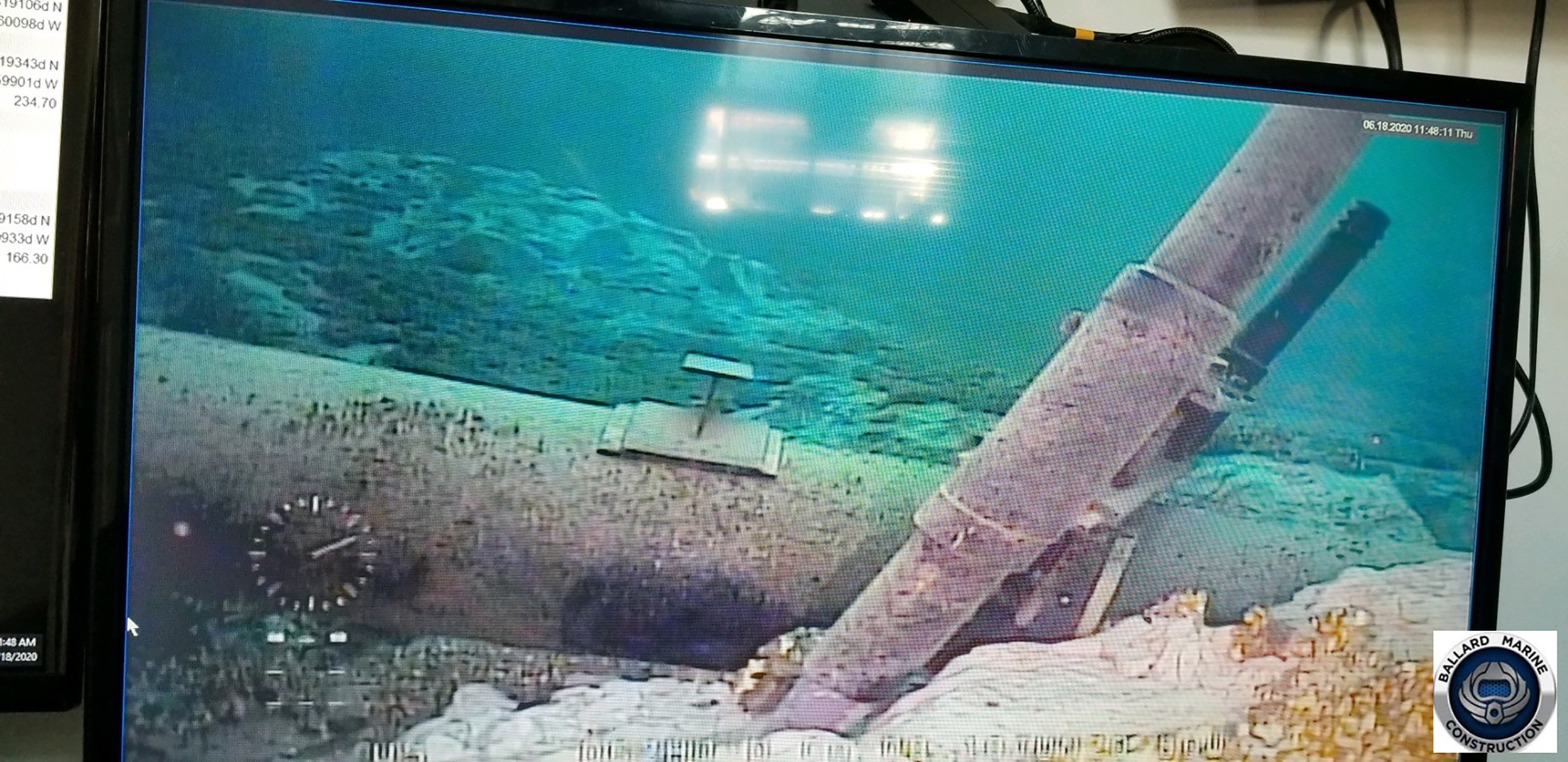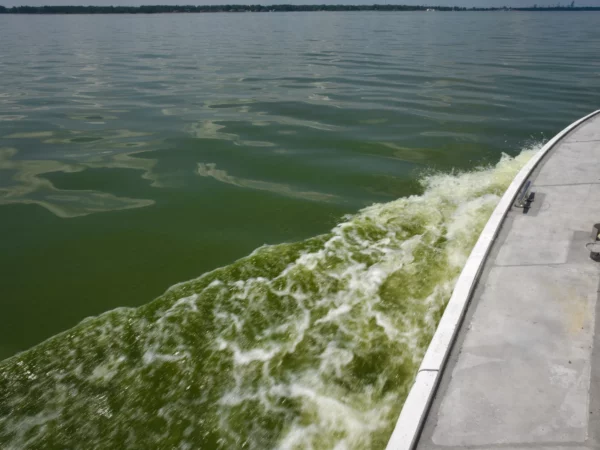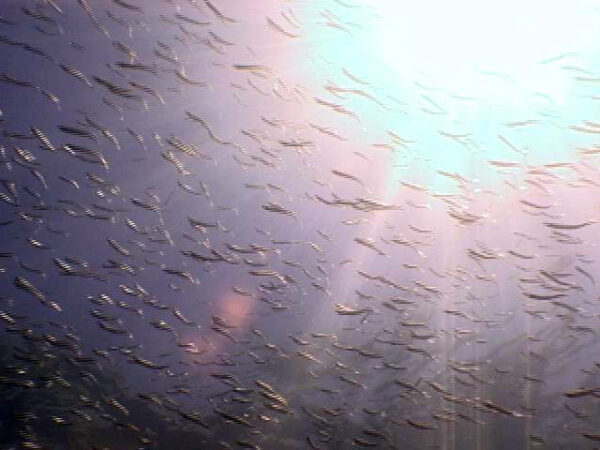
TRAVERSE CITY, Mich. (AP) — Enbridge’s plans for drilling an oil pipeline tunnel beneath a channel linking two of the Great Lakes do not meet industry standards and pose significant hazards to workers and the environment, experts who reviewed project documents on behalf of opposition groups said Monday.
Two geologists said they found numerous shortcomings with the Canadian company’s proposals to the Michigan Department of Environment, Great Lakes and Energy, which is considering whether to allow construction of the tunnel under the Straits of Mackinac.
“What Enbridge has submitted to the state of Michigan doesn’t come close to properly designing and preparing for a tunnel underwater,” said Brian O’Mara, a geological engineer who has worked on dozens of tunnel projects.
The analysis was requested by Oil & Water Don’t Mix, a coalition of environmental, business and tribal organizations. They are fighting to shut down Line 5, an Enbridge pipeline that crosses the bottom of the waterway connecting Lake Michigan and Lake Huron.
Enbridge spokesman Ryan Duffy said the tunnel plans were developed in consultation with experienced geologists and engineers.
Jay Dee Contractors Inc. and the U.S. affiliate of Japanese tunnel construction firm Obayashi Corp. are constructing the tunnel. Arup, an engineering and consulting firm, is helping with design.
“Jay Dee and Obayashi have a collective track record of constructing more than 400 pressurized-face tunnels consisting of more than 2.4 million feet (732,000 meters) of tunnelway,” Duffy said. “A number of those projects involved high pressure and ground condition parameters similar to those that will exist in the Straits of Mackinac.”
The company contends the 67-year-old Line 5 that runs between Superior, Wisconsin, and Sarnia, Ontario, is in good condition but wants to replace the 4-mile-long (6.4-kilometer-long) underwater segment with another to be housed in a nearby subterranean tunnel. Enbridge says it would pay the estimated $500 million cost.
During an online news conference, O’Mara said the tunnel plans had changed considerably since a 2017 assessment, which described the project as feasible and low-risk. That analysis by a Canadian firm was based on assumptions that have proven incorrect, he said.
It presumed the tunnel would be located entirely in solid bedrock, yet Enbridge’s plan also includes digging through poor bedrock, soft silts and clay, O’Mara said.
Limestone and dolomite formations beneath the waterway connecting Lake Huron and Lake Michigan are complex jumbles that can change drastically and suddenly, he said. Without adequate data on rock conditions, fault zones and groundwater pressure, a tunnel boring machine can break down, forcing expensive repairs and delays, he said.
For that reason, tunnel designers usually extract samples every 50 to 200 feet (15 to 61 meters), he said. Yet, Enbridge’s contractor took them once every 950 feet (290 meters).
“They have done just a fraction of what you would expect on a project of this size and magnitude,” O’Mara said.
Enbridge is confident in its geological analysis and considers conditions “favorable” for the tunnel projects, Duffy said. “As our geologists and engineers gather more information from studying the cores, we will continue to enhance knowledge about the rock and soil conditions.”
O’Mara said the risk analysis also presumed that the tunnel interior around the pipeline would be filled completely with cement to prevent leaks and collapse, but that feature is absent from the current plan.
“This single design change represents the greatest risk and would make a catastrophic disaster much more likely to occur,” O’Mara said.
The Enbridge plan also has no provisions for dealing with toxic methane that has been found in the area’s groundwater and could penetrate the tunnel, he said. The risk analysis assumed none would be present, he said.
O’Mara said the proposed tunnel’s V-shaped design configuration would endanger workers by putting the deepest point in the middle of the straits.
Another threat is posed by a slurry that would be injected during construction to keep the tunnel stable and lubricated, said Mike Wilczynski, a retired former senior geologist with the state Department of Environmental Quality, now known as EGLE. The mud consists of water, additives and bentonite clay.
Plans call for piping the mud to the surface, removing the clay and discharging up to 5 million gallons (18.9 million liters) of treated wastewater back to the straits, he said, but the permit application doesn’t show how the lakes would be protected from accidental releases.
A bentonite spill could be more environmentally damaging than oil, which floats on the surface and can be recovered, Wilczynki said.
“Bentonite can stick to everything it touches and forms an impermeable barrier” that can smother fish and bottom-dwelling invertebrates that are essential for food chains, he said.
Duffy said slurry and water would be piped to settling ponds for treatment and water would be cleansed to meet state standards before discharged back into the straits.
The state environment department is scheduled to conduct the first of several public hearings Tuesday on wastewater treatment and wetlands permits that Enbridge needs to move forward. The department plans to issue rulings by the end of the year.
Environmentalists urged state regulators to demand answers about issues raised by the outside review before green-lighting the project.
“Failure to do so could result in tragedy for the Great Lakes,” said Beth Wallace of the National Wildlife Federation.
Spokesman Nick Assendelft said department staffers would consider the findings of the Oil & Water Don’t Mix reviewers along with other public comments.
“The state also has retained tunneling experts as consultants and will explore if others are needed to help evaluate technical information that is part of the public record,” Assendelft said.
Read more news about Enbridge on Great Lakes Now:
Enbridge now inspects freighters to avoid another anchor strike on Line 5
Enbridge just wants a permit. Michigan critics want to bring down Line 5
Judge OKs oil flow through second Great Lakes pipeline
Whitmer: Enbridge dodging responsibility for potential Line 5 spill
Michigan judge allows restart of disputed Line 5 oil pipeline
Pollution, Permits: Enbridge, Michigan grapple with Line 5 tunnel project
Whitmer’s Dilemma: How to shut down Line 5, avoid a legal swamp and keep Northern Michigan happy
Featured image: This June 2020 photo, shot from a television screen provided by the Michigan Department of Environment, Great Lakes, and Energy shows damage to anchor support EP-17-1 on the east leg of the Enbridge Line 5 pipeline within the Straits of Mackinac in Michigan. (Michigan Department of Environment, Great Lakes, and Energy via AP)
2 Comments
-
In the ongoing battle to shut down Line 5 and protect our Great Lakes, we must use every resource we can to achieve this.
One of those resources is an article I wrote about back in March. It tells of what really happens when Enbridge is involved. It tells of the disaster in Kalamazoo where a million gallons of oil leaked into the river. It took 10 years and a billion dollars to clean it up.
On July 25, 2010, this disaster took place. Some 45 days later, on September 9, 2010, Enbridge had another oil spill, this one in Illinois. How many times does this need to happen before the danger is finally shut down?
The story appeared on March 29, 2021. It was in the News-Herald, a Michigan paper.
To read the story, just type my name and Enbridge. Allan Bieniek-Enbridge. The story is titled “Let’s protect Michigan’s waters, not Enbridge’s oil.” It should be at or near the top of the page.
Use the story however you want to. Please distribute to whoever might be able to use it.
The Kalamazoo leak lasted for 17 hours before it was shut off. Do we really want a 17-hour leak at the Straits of Mackinac?
To be perfectly blunt, we need to shut down Line 5 and tell Enbridge to shut up.
-
Every time a pipeline company wants to replace an aging pipeline or god forbid build a new pipeline there is massive opposition from environmental groups. Reading this article one wonders about the geologists hired by Oil & Water Don’t Mix, a coalition of environmental, business and tribal organizations. They have done no actual drilling samples but say,” Limestone and dolomite formations beneath the waterway connecting Lake Huron and Lake Michigan are complex jumbles that can change drastically and suddenly, he said. Without adequate data on rock conditions, fault zones and groundwater pressure, a tunnel boring machine can break down, forcing expensive repairs and delays, he said.” One just might say they are making assumptions of the rock conditions under the Straits of Mackinac.Whereas Enbridge has actually done drilling tests and hired engineers and very experienced companies that specialize in the type of tunnel system that has been proposed. There are about 28 different environmental organizations that all oppose this project. Just wondering but where do they get their funding from? Tides Foundation ,Rockefeller foundation? The fact is oil and natural gas is required for heating homes,the petrochemical industry and refiners to make various petroleum products.Enbridge is willing to spend $500Million to replace a 1″ steel pipeline that has never had any leaks and build a tunnel system to protect pipelines that deliver vital oil and natural gas to markets that need them. Somehow I don’t think Endbride is acting in a callous manner and are in fact being proactive in building this tunnel project to ensure no oil or natural gas will pollute the Great Lakes. I don’t think they are going to spend $500Million to build a defective tunnel system.The last thing a pipeline company wants is a leak in their systems. Modern pipelines are built with 1/2 steel and 1″ steel in environmentally sensitive areas.All welds are x rayed to ensure integrity.




